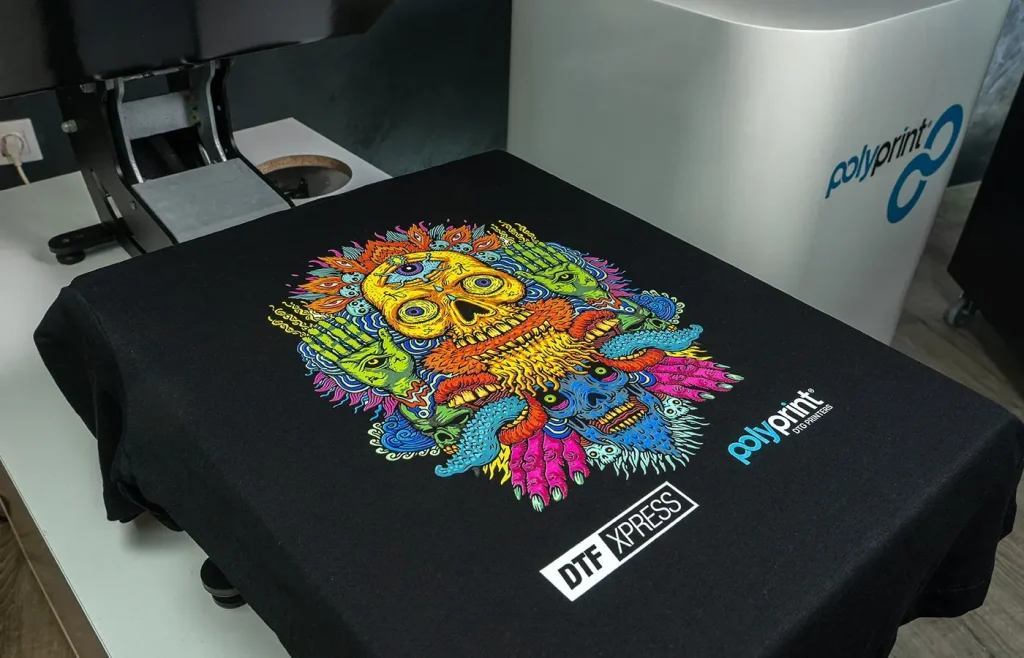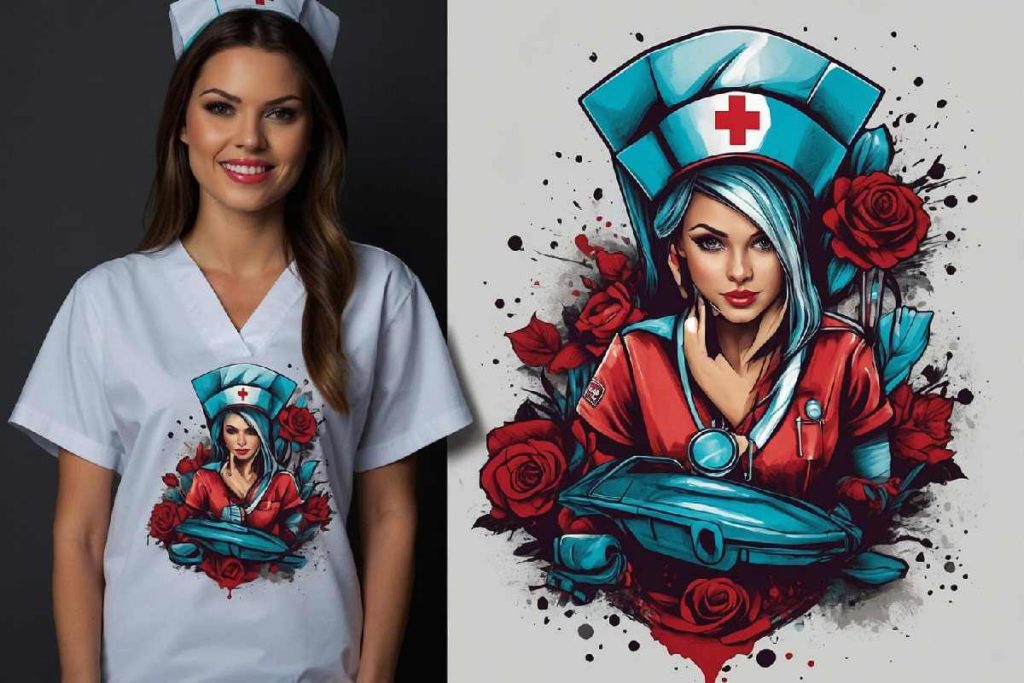DTF printing, or Direct-to-Film printing, is revolutionizing the way we approach textile design and customization. As an innovative technique that transfers intricate designs directly onto fabrics, it offers amazing versatility for entrepreneurs and hobbyists alike. Beginners interested in this method will discover a myriad of advantages, from excellent durability to vibrant color reproduction, making it an attractive choice for custom apparel and promotional items. The DTF printing process not only simplifies the creation of unique products but also allows for personalization that can meet diverse consumer demands. With recent technological advancements, this method is more accessible than ever, ensuring high-quality results in a cost-effective manner.
Known in the industry as Direct-to-Film technology, DTF printing encapsulates a fascinating approach to textile decoration that is gaining momentum. This cutting-edge method streamlines the process of applying detailed designs onto various materials, making it a go-to solution for custom garment creators and small businesses. Whether referred to as film-based printing or film transfer printing, the principles remain the same; it combines traditional methods with modern technology to produce exceptional, durable results. Those new to this process can benefit from understanding the foundational steps involved and the benefits it offers, such as increased efficiency and design flexibility. Consequently, Direct-to-Film printing stands out as a pivotal trend within the wider landscape of textile printing.
Understanding the Basics of DTF Printing
DTF printing, or Direct-to-Film printing, is an emerging technique that is revolutionizing the way designs are transferred onto fabrics. This method utilizes a specialized transfer film and adhesive powder to create high-quality prints suitable for various materials, including cotton and polyester. Unlike traditional methods that often limit designs to specific fabrics, DTF printing’s versatility allows for broader applications, making it an exciting option for custom apparel and promotional items.
For those new to this printing technique, it’s crucial to understand the fundamental aspects of DTF printing. The process begins with designing a graphic that needs to be carefully formatted for DTF applications. One of the key merits of DTF printing is its ability to adapt to a variety of textiles, making it a top choice for businesses catering to diverse markets. As beginner printers delve into DTF printing, grasping these basics sets the foundation for successful, high-quality production.
Exploring the DTF Printing Process
The DTF printing process consists of several detailed stages that are integral to achieving optimal results. Initially, a design is created using graphic design software specifically tailored for DTF workflows. Following this, the design is printed onto specialized transfer film using a dedicated DTF printer, ensuring the final product retains its vibrancy and detail. The application of adhesive powder while the ink is still wet is a critical step, solidifying the print’s adherence to the fabric.
Curing the adhesive is the next pivotal stage in the DTF printing process. It involves applying heat to solidify the adhesive’s bond with the film, preparing the print for the final heat transfer onto the fabric. This meticulous attention to detail throughout the process results in durable and stunning prints that can withstand multiple washes, providing longevity and satisfaction for both businesses and customers alike.
The Advantages of DTF Printing for Small Businesses
One of the primary advantages of DTF printing is its remarkable versatility, allowing businesses to print on a range of materials such as cotton, polyester, and blends. This flexibility opens up opportunities for custom apparel production, letting entrepreneurs cater to unique customer preferences without being constrained by material limitations. For small businesses, this adaptability is essential for standing out in a competitive market.
Moreover, DTF printing offers cost-effective solutions compared to traditional printing methods. With lower setup costs and minimal equipment requirements, it’s an attractive option for businesses looking to produce high-quality items without significant investment. This affordability is particularly beneficial for custom orders which often vary in quantity, enabling entrepreneurs to meet customer demands efficiently and economically.
Current Trends and Innovations in DTF Printing
The field of DTF printing is rapidly evolving, driven by continuous technological advancements and the introduction of innovative materials. Recently developed DTF printers offer better color vibrancy and faster production speeds, making the printing process more efficient for businesses. This technology is not only beneficial for established companies but also serves as an accessible entry point for individuals new to the DTF printing landscape.
In addition to technological enhancements, the introduction of superior transfer films and adhesives has improved the effectiveness of DTF prints. New materials provide better adhesion and flexibility, which is vital for catering to popular textiles such as athletic wear. As the printing industry moves towards more sustainable practices, these advancements allow businesses to deliver high-quality products while addressing eco-conscious consumer demands.
Getting Started: Essential Equipment for DTF Printing
For beginners aiming to venture into DTF printing, selecting the right equipment is crucial for achieving successful outcomes. A reliable DTF printer specifically designed for high-quality output is essential for producing vibrant and detailed prints. Coupled with a quality heat press, these are the primary tools needed to transition designs from film to fabric efficiently.
Additionally, sourcing high-quality transfer films and adhesives will ensure that the prints can withstand everyday wear and tear. Familiarizing oneself with graphic design software capable of handling high-resolution graphics will also enhance the printing experience, leading to sharp and clear designs that meet professional standards. Therefore, equipping yourself with the right tools and knowledge sets a solid groundwork for success in DTF printing.
Tips for Successful Custom DTF Prints
Creating custom DTF prints requires a blend of creativity and technical know-how. To ensure excellent results, it’s important to pay attention to the design creation stage. Utilizing high-resolution images and ensuring that the artwork is tailored for DTF printing specifications can significantly impact the final product’s quality. Moreover, being familiar with color profiles and adjustments in design software can enhance the vibrancy of the prints.
After ensuring the design is perfect, it’s crucial to follow the DTF printing process step-by-step meticulously. Special care should be taken during the adhesive application and heat pressing stages, as these directly influence the durability and overall appearance of the prints. By embracing these practices, beginners can establish a reputation for high-quality custom DTF prints, ultimately enhancing customer satisfaction and business growth.
Frequently Asked Questions
What is the DTF printing process and how does it work?
DTF printing, or Direct-to-Film printing, is a method where designs are printed onto a special film before being transferred to textiles. The process involves creating a design, printing it onto transfer film using a DTF printer, applying an adhesive powder, curing it, and then heat pressing it onto the fabric. This yields vibrant, durable prints suitable for various materials.
What are the main advantages of DTF printing compared to other methods?
DTF printing offers several advantages, including versatility across different fabrics like cotton and polyester, vibrant color quality, and cost-effectiveness for small businesses. It allows for custom DTF prints without high setup costs, making it ideal for short runs and personalized apparel.
Is DTF printing suitable for beginners looking to start their own printing business?
Yes, DTF printing is beginner-friendly due to its straightforward process and affordable setup. With the right equipment, including a DTF printer and heat press, newcomers can easily create custom DTF prints and cater to diverse customer needs without requiring extensive experience in textile printing.
What equipment do I need to get started with DTF printing?
To begin with DTF printing, you will need a compatible DTF printer, a quality heat press, DTF transfer films, and adhesive powders. This setup is essential to ensure high-quality prints and successful transfer onto fabric, allowing you to make a variety of custom items.
How durable are prints created using the DTF printing process?
Prints made using the DTF printing process are known for their durability. They maintain vibrant colors and withstand multiple washes without fading or peeling, making them suitable for long-lasting apparel and promotional products.
Are there sustainable options available in DTF printing?
Yes, DTF printing is evolving towards more sustainable practices. Many suppliers now offer water-based inks and recyclable transfer films, allowing businesses to reduce their environmental impact while still providing high-quality custom DTF prints to eco-conscious consumers.
| Key Points | Details |
|---|---|
| Definition | DTF (Direct-to-Film) printing is a modern textile printing technique that transfers designs onto fabrics using specialized films and adhesive powder. |
| Versatility | Can print on a variety of materials including cotton, polyester, blends, and more, making it ideal for custom apparel. |
| Quality | Produces vibrant, durable prints that withstand multiple washes without fading. |
| Cost-Effectiveness | Lower setup costs and equipment requirements make it accessible for small to medium businesses. |
| Current Trends | Technological advances, material innovations, and a focus on sustainability are shaping the future of DTF printing. |
| Getting Started | Essential equipment includes DTF printers, heat presses, and quality transfer films; proper design preparation is critical. |
Summary
DTF printing is an innovative textile printing technique that offers unmatched flexibility and quality, making it a popular choice for businesses looking to cater to custom needs. This method not only allows for vibrant and long-lasting prints on various fabrics, but also provides an economical solution for small businesses. With recent advancements in technology and a growing emphasis on sustainability, DTF printing continuously evolves to meet market demands. For those new to this field, understanding the intricacies of DTF printing is essential to harness its full potential and succeed in the competitive printing landscape.



